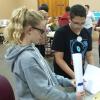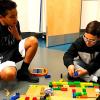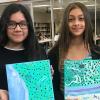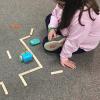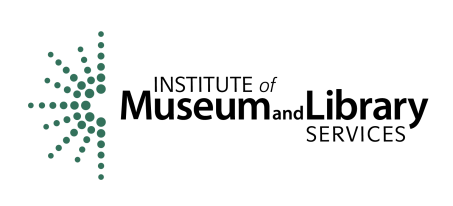Building the STEM Workforce: Quickstart Toolkit
As engines for workforce development, race and social equity, technology access and lifelong learning, public libraries have a unique and pivotal role to play in actively fostering stronger STEM education outcomes in their communities.
This Quickstart Toolkit outlines strategies for short-term changes that can help libraries accelerate their progress as STEM equity leaders — no matter how far they’ve already progressed in that journey. Library teams can build on these quickstarts using the “Deeper Dive” resources found in each section below.
The toolkit extends insights from ULC’s Partners for Middle School STEM initiative and Strategic Playbook. Please contact info@urbanlibraries.org with any questions.
- 1. Getting Started
Increasing the library’s leadership and engagement in equitable STEM education represents a critical area of growth for every library in the 21st-century. When getting started with intentionally taking greater ownership of this role, it is critical for library leaders to build a deep understanding of why this work matters for all communities, and how reaching and engaging underserved tweens in particular is pivotal for driving change.
Quickstart Strategies1.1. Recognize Why Fixing the "Leaky STEM Pipeline" Must Be a Priority for Inclusive Economic Development and Race and Social EquityReview research and reporting to build knowledge about the leading role of STEM industries in defining the future of 21st-century economies and why there is an urgent need to address equity gaps in STEM career pathways (the “leaky STEM pipeline”). Click here for a perspective on how STEM education prepares today’s youth for the higher-order cognitive skills they will need to succeed in the future workforce. Click here for data-based prediction of how STEM industries are likely to lead job creation over the next decade. Click here for a deep dive into how low-income youth and students of color are being left behind in STEM due to systemic barriers.
1.2 Understand the Importance of STEM Education for TweensReview research and reporting to build understanding of why middle schoolers (ages 11-14) represent a priority developmental stage for building confidence, curiosity and skills with STEM. Click here for insights about how the accelerated brain development of tweens and increased capacity for intellectual processes can make them ideal STEM learners. Click here for a perspective on how developmentally appropriate experiences in middle school influence interests and pursuits youth will explore in high school and college.
1.3 Identify the Target Audience(s) for the Library's STEM ProgrammingUse an equity lens to consider and identify local youth who have the greatest need of support and engagement in STEM. Review demographic and community data related to the library’s service area in order to pinpoint underserved neighborhoods. Ensure that reaching and engaging middle-school aged youth in these communities is a priority.
1.4 Map the Local STEM Education EcosystemResearch and create a list of high-quality STEM learning resources available to local youth at the library, schools, afterschool programs, online and through the local business community. Identify current cross-sector partnerships and programs. Update this list at least annually.
1.5 Closely Monitor Trends in STEM Education, Careers and TechnologyOne of the most critical reasons that no single institution can meet the STEM learning needs of youth is that STEM industries, disciplines and tech are evolving at an ever-faster rate. In order to build your capacity as a STEM leader, it is critical to identify and regularly review STEM news from trusted sources in the library, education, business, technology and local government sectors. Consider subscribing to newsletters, setting up Google Alerts, attending webinars and conference sessions and keeping records of key updates and quotes you find informative.
DIVE DEEPER2. Building CapacityLibraries have always been sources of informal STEM learning through collection curation and reference services. Some libraries already go beyond those initial offerings to actively provide programming, partnerships and initiatives focused on robust and inclusive STEM education. However, no matter where your library is at in its journey, there is always room to foster greater staff success and stronger institutional capacity for this work.
Quickstart Strategies2.1 Embed the Importance of STEM in Organizational CultureEnsure the library’s executive and board leadership are clearly and deliberately setting the context for this work as a priority for the library and the community at large. Include a focus on fostering stronger STEM opportunities in the library’s strategic planning, reporting and data collection. Clearly articulate the library’s vision for STEM and progress with this work through both internal and external communications channels (e.g., newsletters, blogs, social media).
2.2 Identify Staff Training NeedsMap out the skills that staff will need to realize the organization’s STEM goals. Determine where gaps exist based on the staff’s current training for STEM programming, 21st-century literacies, outreach and equity, diversity and inclusion. Prioritize funding and allocate time for ongoing and targeted professional development around STEM, youth development and equity.
2.3 Develop Staff Communities of PracticeEncourage staff to share and learn together about their work and connections to the library’s STEM equity focus. Some effective channels for starting these conversations can include regular staff meet-ups, online forums and brown bag lunches. Over time, these communities of practice can evolve into more structured models for coaching, such as learning circles, action teams or other peer-to-peer learning cohorts.
2.4 Model and Promote a Growth Mindset Across Library StaffLet staff know they are safe to learn and fail and iterate. Take the risk of punitive assessment out of STEM training, freeing staff to take chances and learn from inevitable mistakes. Make it known that STEM evaluation will focus on the library’s ability to adapt to change. Use meeting time to reflect on how staff can model a growth mindset for each other and the customers they serve.
2.5 Identify Institutional Barriers to Equitable STEM LearningReview the library’s programs, services, policies and practices to locate gaps in race and social equity, both for library customers and staff. Examples could include STEM programs that require internet access or are only available in English. Make immediate revisions to address equity barriers wherever possible and commit to long-term efforts to dismantle all gaps identified.
DIVE DEEPER3. Designing STEM Programs for TweensMiddle school youth (ages 11-14) are at an especially pivotal age for growing interest and confidence in STEM. Developmentally, they are experiencing accelerated development, which primes them for the higher-order learning and skill development required for advanced STEM. At the same time, middle schoolers are at an age when they begin to make lifelong choices, form social identities and settle into career tracks. There is not one single way to design effective youth programs for tweens, but the following action steps can help ensure your library has a strong foundation increasing youth engagement in STEM.
Quickstart Strategies3.1 Outline Learning Outcomes for STEM ProgramsDesigning effective STEM programs mandates being intentional about what we seek for youth to learn through the program. Learning outcomes articulate the desired change in behavior, attitude, skill or knowledge that the library strives to support in youth, community or even library staff. Once established, clearly state the objectives for learning at the start of each program. This helps youth understand what to expect and what success looks like.
3.2 Co-Create STEM Programs with YouthAllowing youth to co-design and include their voice in programs helps participants build and direct program elements based on personal interests. Feedback sessions, pre- and post-program surveys and take-home questionnaires are some examples of useful tools for embedding co-creation in program design.
3.3 Allocate Time for Reflection at the End of ProgramsSpend time in reflection at the end of programs and ask youth to articulate what they learned. This closes the learning cycle and allows students to connect experiences and learning by using critical thinking.
3.4 Focus Program Design on Principles of Positive Youth DevelopmentThe "Five Cs" model offers a useful framework for understanding positive youth development by focusing on connection, confidence, character, contribution and competence. Click here to learn more.
3.5 Design for Open-Ended Exploration (with Constraints)The best STEM experiences are designed to allow for participant-led exploration. This allows teams of youth to collaborate and follow their interest. Adding a constraint to the program design (“now let’s limit the materials or time we have to do this”) mimics real-life situations and can add an element of healthy competition for the learners.
DIVE DEEPER4. Leveraging Strategic PartnershipsPartnerships empower libraries to expand their STEM programming capacity by leveraging knowledge, skillsets and resources in the community. However, libraries only have a finite amount of time and resources available to commit to building partnerships. Strong and sustainable partnerships are vital and require strategic alignment, careful planning and continuous communication.
Quickstart Strategies4.1 Clearly Define the Library's Needs and Assets as a STEM PartnerReview the library’s goal outcomes for its STEM programming and clearly map out where there are gaps as well as the library’s unique strengths. Consider assets and gaps related to the library’s reach and reputation for target audiences, STEM expertise, staff capacity and available resources for programming – space, technology, materials, food, etc. Regularly revisit and revise this list. Ensure the library is prepared to clearly articulate its needs and assets to potential partners by developing an “elevator pitch” – concise, go-to language your team can use for initial outreach.
4.2 Map Current and Potential Partners in the CommunityCreate and maintain a list of key leaders in the local STEM education ecosystem. This list can and should include a broad range of organizations who share the library’s interest in fostering strong and equitable STEM learning for youth, such as local government offices, schools, afterschool programs, businesses and nonprofits with a focus on education and/or social justice. Research the missions, priorities, current activities and connections of these organizations to identify potential partners with the greatest strategic value.
4.3 Launch New Partnerships with a Baseline for ActionBefore beginning work with a new partner, co-create and commit to a letter of agreement or memorandum of understanding in order to establish a foundation for sustainable collaboration. This signed agreement should concretely outline shared expectations, roles and responsibilities, accountability for deliverables and anticipated targets and deadlines.
4.4 Establish a Strong Communications InfrastructurePlan ahead to ensure the library and its partners can maintain effective and continuous communications, even as partnerships evolve and face hurdles. Especially when entering a new partnership, be sure to establish mutual understanding and buy-in about contact persons, meeting times and formats, shared communications tools and preferred messaging channels.
4.5 Regularly Evaluate the Partnership Openly and HonestlyEngage new partners actively to establish jointly agreed upon assessment measures and methods. As the relationship continues, be sure the library and partner are taking time to address where expectations are not being met and possible solutions for overcoming barriers. Embed this reflection in the agenda of regular meetings and be sure to celebrate and communicate milestones and key developments in the partnered work.
DIVE DEEPER5. Assessing/Refining the Library’s WorkA program idea may sound compelling and seem worthwhile, but it is hard to know if it actually achieves the desired goals without identifying what you seek to achieve, collecting appropriate data and analyzing the results. Evaluation is a key step to ensuring that your limited resources are utilized effectively to serve the needs of your community. A well-planned evaluation helps staff understand, assess, document and communicate program issues with partners, local leaders and funders.
Quickstart Strategies5.1 Model and Promote an Evaluation Mindset Among StaffEncourage the library’s staff to recognize evaluation as both a process and mindset. Adopting and fostering an evaluation mindset requires humility, critical thinking, regular reflection and examination of underlying beliefs and assumptions. Actively fostering this mindset among team members will not only prepare them to conduct evaluations, but also to lead, grow and evolve their work.
5.2 Create a Logic Model to Guide Evaluation PlanningA logic model is simply an idea map identifying the desired learning outcomes for a program and the path the library will take to achieve those outcomes. Click here to view an example. A logic model helps to organize program planning, management and evaluation activities and gives library staff and partners a guiding document to ground their conversations and work.
5.3 Embed Evaluation Instruments in ProgramsDesign programs to directly integrate informal evaluation instruments such as surveys, feedback boards or exit cards. This will help ensure higher response rates as well as a faster turnaround time for collecting feedback.
5.4 Promote Data Fluency Among StaffCollecting, analyzing and using data is central to the evaluation process, but that work can be intimidating for many staff members who have not developed “data fluency.” Becoming data fluent means gaining confidence and strong capacity for locating, interpreting and actionizing data. Intentionally foster a more data fluent culture among your team by regularly engaging staff in conversations about data practices, investing in data collection tools and providing regular training opportunities.
5.5 Communicate Findings with StakeholdersShare evaluation results widely and actively with external and internal stakeholders in order to build knowledge, deepen connections and grow recognition for the program’s value. Common communications methods include publishing and disseminating reports, hosting Q&A sessions or conducting staff presentations. Consider audiences carefully and ensure messaging is relevant and concise. Don’t be afraid to get creative!
DIVE DEEPER©2022 Urban Libraries CouncilAbout the ULC Partners for Middle School STEM Initiative
Developed in partnership with the National Center for Interactive Learning at the Space Sciences Institute and funded by the Institute for Museum and Library Services, this two-year project focused on building community partnerships that resulted in increased science, technology, engineering and math learning opportunities for low-income middle school students in urban areas.
This project was made possible in part by the Institute of Museum and Library Services grant LG-95-18-0025-18.


